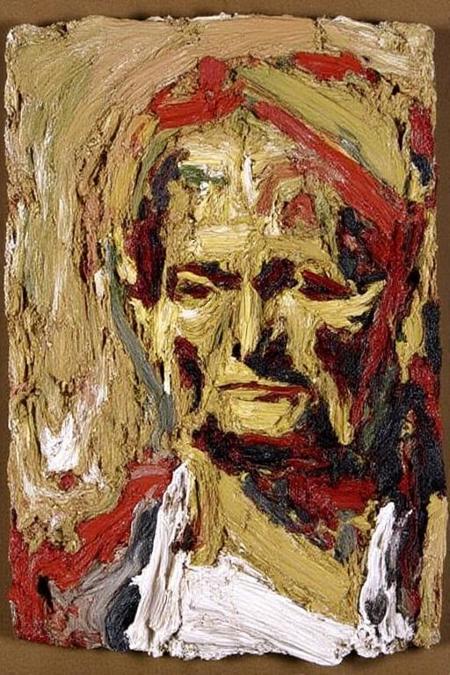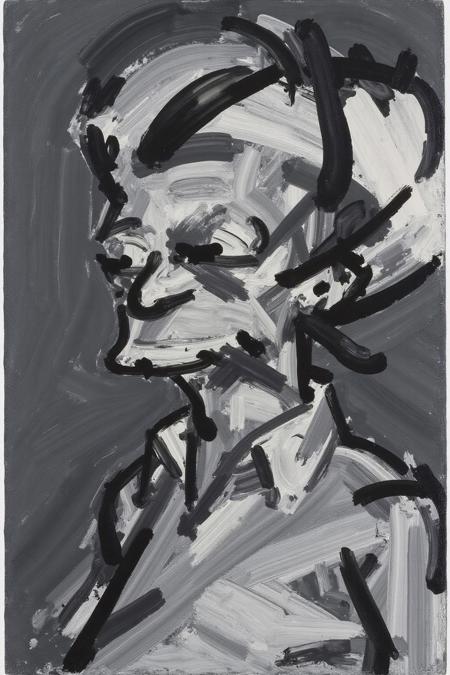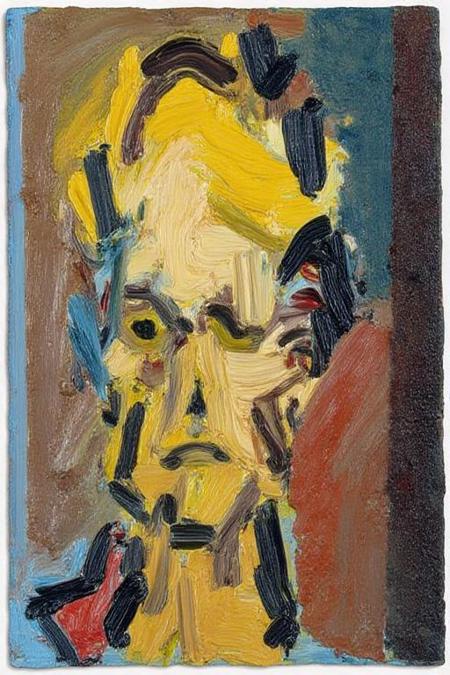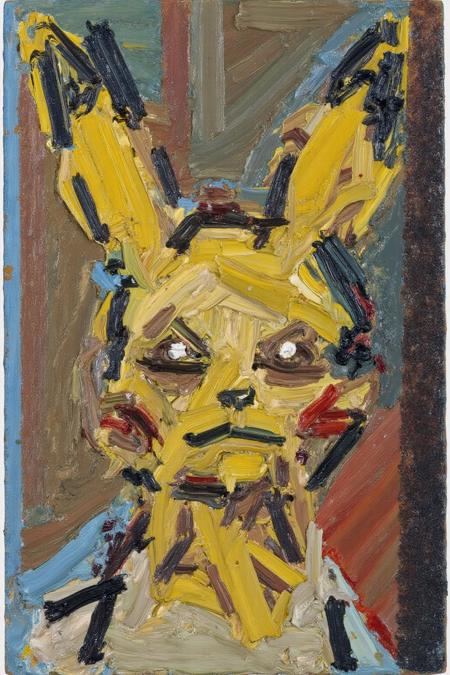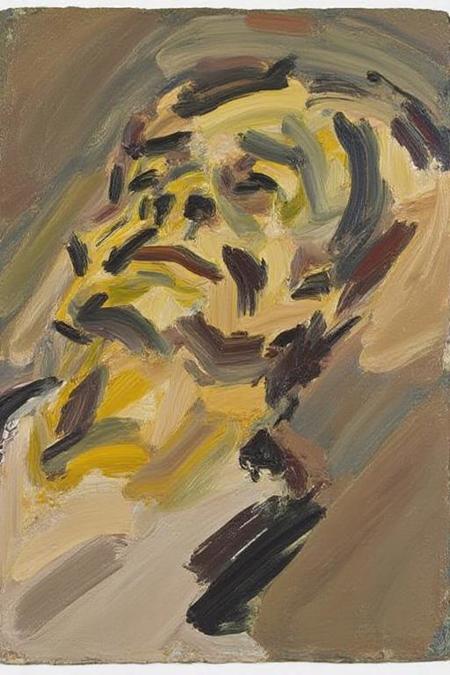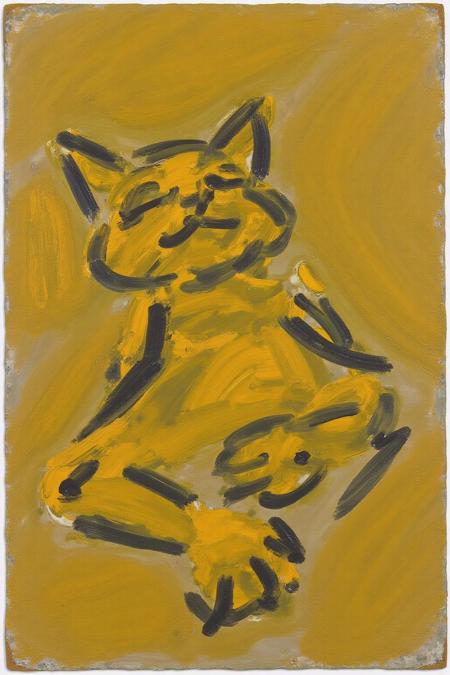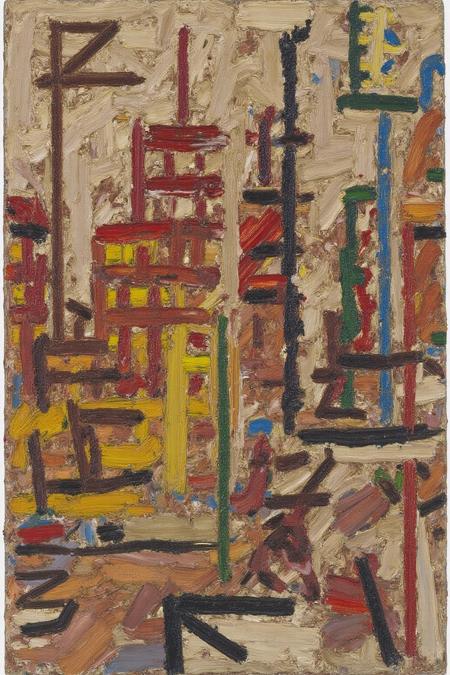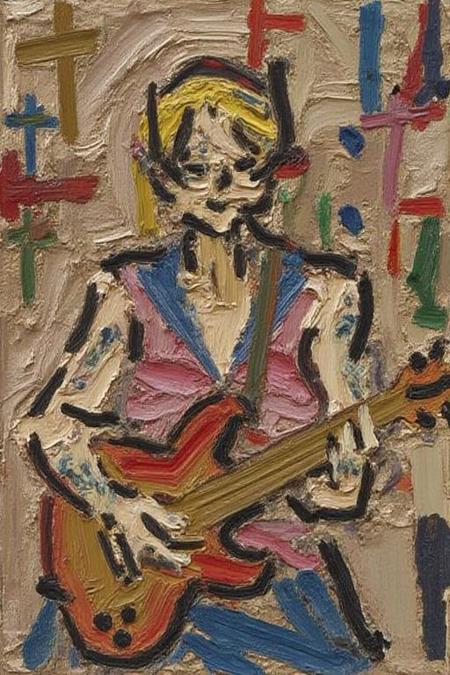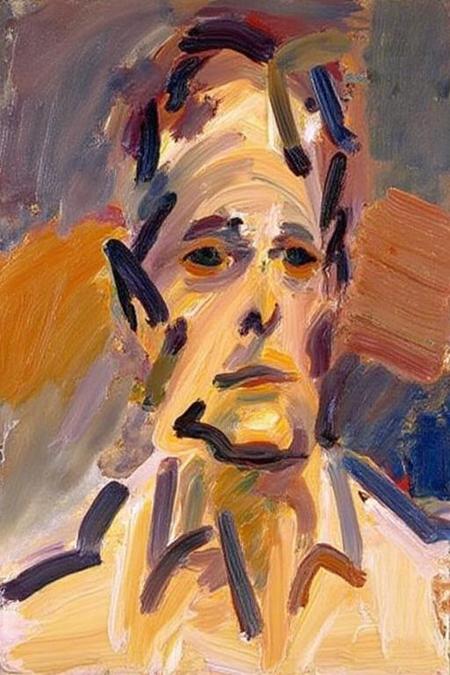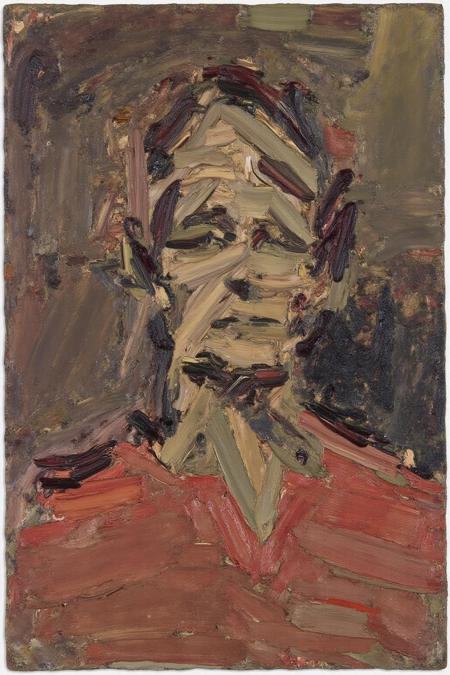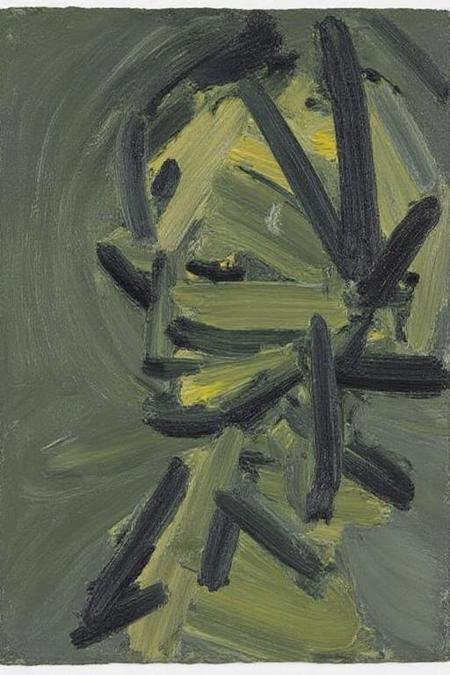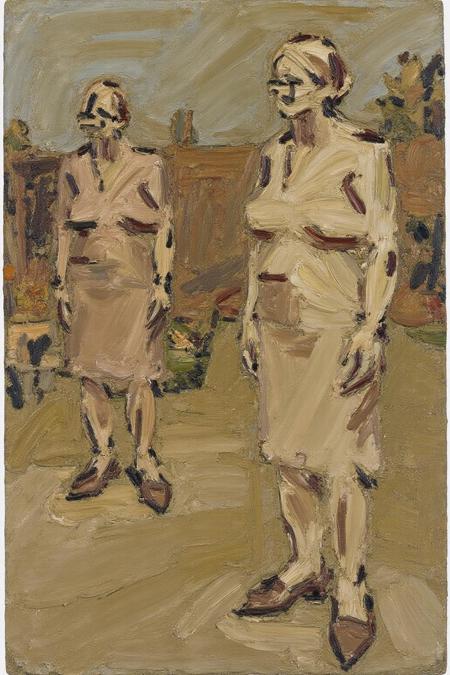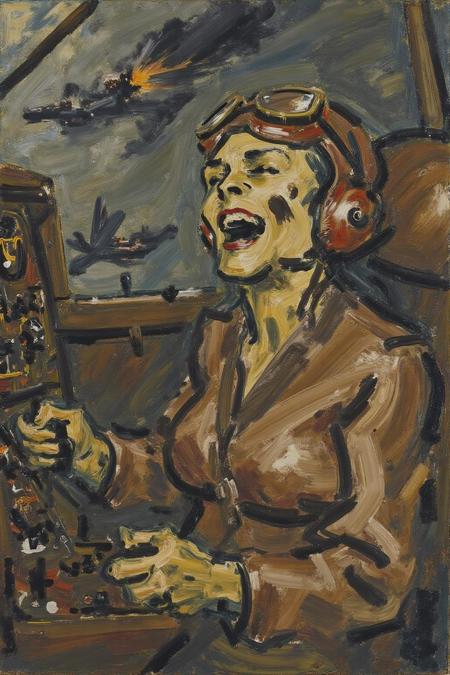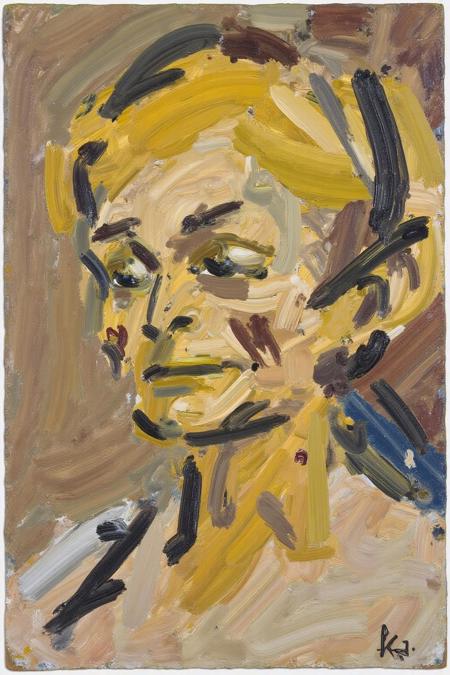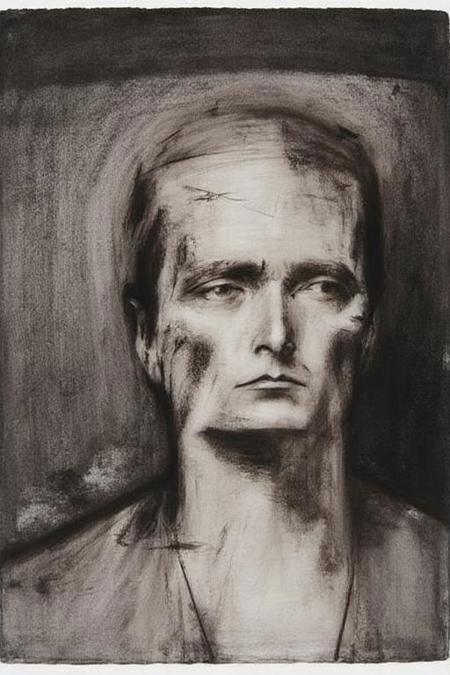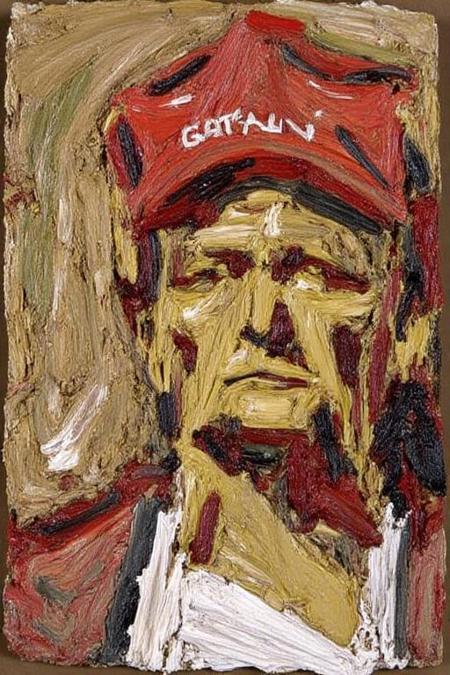
Trained on twenty-one oil paintings by Frank Auerbach.
The best way to use the LoRA is to take a look at the image gallery, pick one you like and use it as a template by replacing the subject with whatever you want to render. This way, you will get an image that is closer stylistically to the original.
But feel free to just have fun with it ?. If you post your first image directly here (click on "Add Post" above the gallery), I will give you 10 buzz for that image ? (If I forgot, just complain loudly ?)
I first learned about him from the economist's obituary column: Frank Auerbach aimed only at one memorable image:
"His studio was a paint explosion. On canvases, of course, but also on the walls and, inches deep, on the floor. Once a brush was in his hand, he was instantly happy. He worked in a sort of storm, often squeezing the paint-tubes directly on the canvas and leaving the squidges as they were. The paintings he became most famous for, from the late 1940s, were so thickly built up that they were as heavy as bas reliefs. His first portrait of his longtime lover, Estella Olive West, seemed to have been cast from wet cement. His paintings of London bomb sites, which he found intensely dramatic, even sexy, were nightmares of muddy disruption. Yet it was one of those, “Summer Building Site” (1952) with black and orange forms embracing two delicate yellow ladders, that seemed to declare he had broken a barrier and made art that was new. Steadily, though slowly, galleries and collectors caught on.
His task for the rest of his life was to make his art memorable. Just one image lodged in the public mind was all he wanted: one image that would also satisfy him and stand up by itself. But he was not a man to be satisfied. His muttered mantra as he painted was “Rubbish, complete rubbish.” To prove the point, at the end of almost all his sessions he would scrape the canvas clean again. To produce one good picture, anything that was merely adequate had to be obliterated with more paint, or destroyed. One portrait took 300 sittings. His bills for paint—blacks, browns and dull greens, “Rembrandt and Hals colours”, in the early years, bright chromium and cadmium colours once he had the money—were extraordinary, because he reckoned that 95% of it went into the bin. Charcoal and graphite were expunged with an eraser, leaving faces behind that were poignant in their ghostliness."
From ChatGPT:
Frank Auerbach (1931/04/29–2024/11/11) is a German-born British painter renowned for his expressive and intense works that focus on portraiture and urban landscapes. He is considered one of the most significant post-war artists in Britain. Auerbach's works are known for their thickly applied paint, raw textures, and emotional power, reflecting his deep engagement with his subjects and the process of painting itself.
Early Life and Background
-
Birth and Early Years:
-
Auerbach was born in Berlin, Germany, to Jewish parents. In 1939, at the age of 8, he was sent to England as part of the Kindertransport, a rescue mission for Jewish children fleeing Nazi persecution. His parents remained in Germany and perished in the Holocaust.
-
-
Education:
-
He studied at Bunce Court School, a progressive boarding school in Kent, where his artistic potential was encouraged.
-
Later, he attended St Martin’s School of Art and the Royal College of Art in London. During this time, he studied under and was influenced by artists such as David Bomberg, who emphasized the importance of structure and the physicality of painting.
-
Artistic Career
-
Style and Technique:
-
Auerbach's art is characterized by its dense impasto—paint applied in thick layers, creating a three-dimensional texture on the canvas.
-
His work often involves scraping and reworking the surface repeatedly, sometimes over months or years, resulting in an intense physicality and depth.
-
He employs a limited palette, often earth tones and muted colors, but infuses them with dramatic energy and dynamic forms.
-
-
Subjects:
-
Portraiture: Auerbach repeatedly painted a small group of sitters, including close friends, relatives, and models, creating deeply personal and intimate works.
-
Urban Landscapes: He was fascinated by the changing landscapes of post-war London, capturing its gritty vitality and ever-evolving character.
-
-
Process:
-
Auerbach is known for his disciplined and obsessive approach to painting. He often worked on a single piece over an extended period, sometimes erasing or reworking entire sections in search of the "right" form.
-
Notable Works
Some of Auerbach’s most famous works include:
-
"Head of E.O.W." (1955):
-
A striking portrait of his long-time lover and muse, Estella Olive West, reflecting his early exploration of impasto and abstraction.
-
-
"Primrose Hill" Series:
-
A series of urban landscapes portraying the area around Primrose Hill in London, characterized by thick textures and a sense of movement.
-
-
"To the Studios" (1977):
-
An evocative painting that captures the essence of Auerbach's connection to his studio and artistic process.
-
Artistic Philosophy
Auerbach believed in the transformative power of painting, aiming to capture not just the physical appearance of his subjects but their emotional and existential essence. He sought to recreate his experiences on the canvas, allowing viewers to feel the intensity of his engagement with the world.
Recognition and Influence
-
Critical Acclaim:
-
Auerbach has been celebrated as one of the most important painters of his generation. His works have been compared to those of Francis Bacon, Lucian Freud, and Alberto Giacometti, with whom he shares an interest in the human condition and raw expression.
-
-
Awards:
-
In 1986, he represented Britain at the Venice Biennale, winning the prestigious Golden Lion for his contributions to painting.
-
-
Influence:
-
Auerbach's work has had a lasting impact on contemporary art, inspiring artists who explore texture, abstraction, and the expressive potential of paint.
-
Later Life and Legacy
-
Auerbach continues to paint and exhibit internationally, maintaining a rigorous work ethic into his later years.
-
His works are housed in major collections, including the Tate Gallery, the Museum of Modern Art (MoMA) in New York, and the National Gallery of Art in Washington, D.C.
Key Traits of His Work
-
Dynamic Energy: His paintings pulse with life, capturing both the physical and emotional essence of his subjects.
-
Textural Depth: His thickly applied paint creates a sculptural quality, making his works almost tangible.
-
Commitment to Process: Auerbach's repeated reworking of his pieces reflects his dedication to achieving authenticity and truth in his art.
Frank Auerbach's work stands as a testament to the enduring power of painting, offering a visceral and transformative experience that resonates deeply with viewers.
描述:
训练词语: fraauer1 painting
名称: fraauer1_cap_d6a3.safetensors
大小 (KB): 56212
类型: Model
Pickle 扫描结果: Success
Pickle 扫描信息: No Pickle imports
病毒扫描结果: Success

